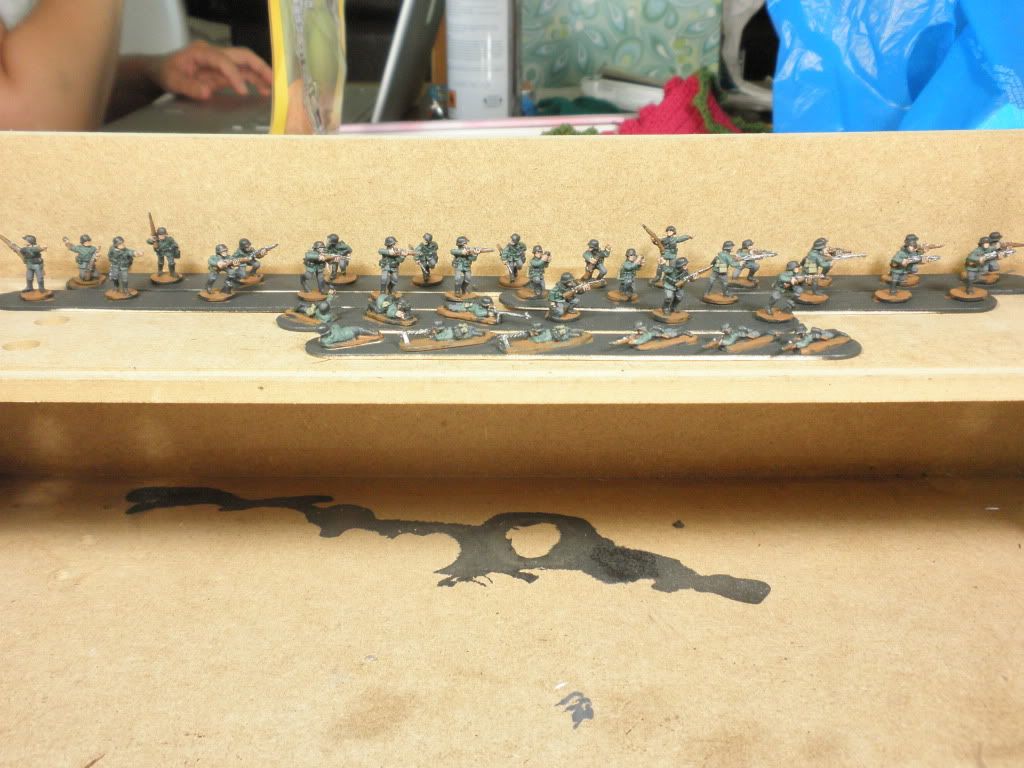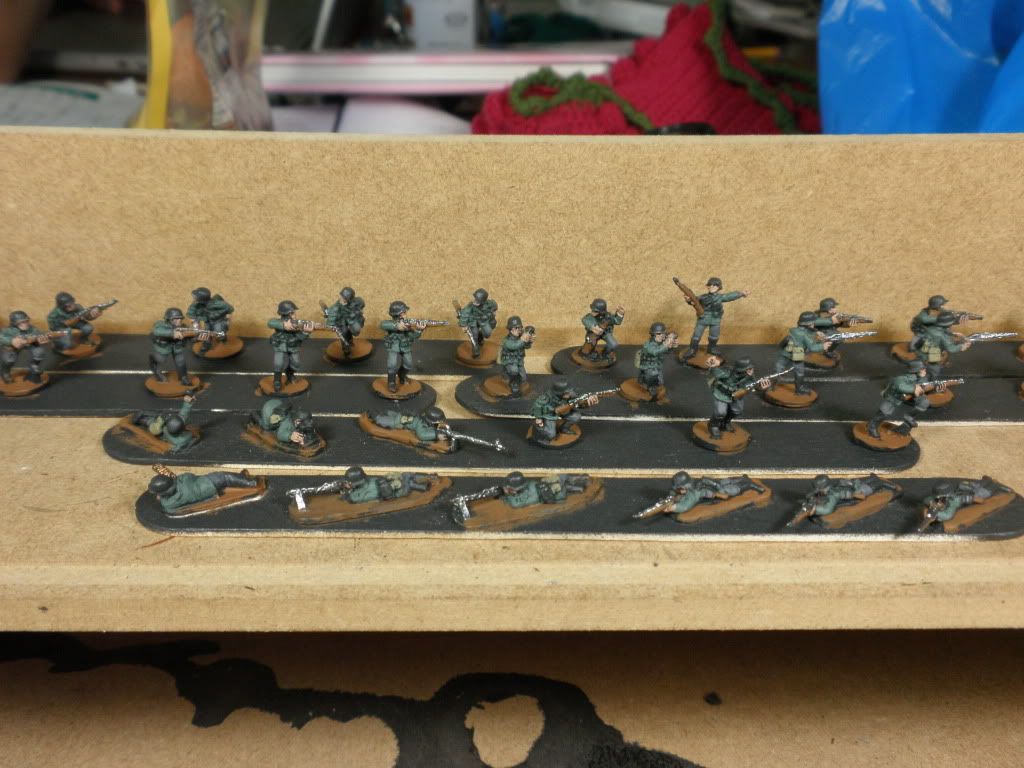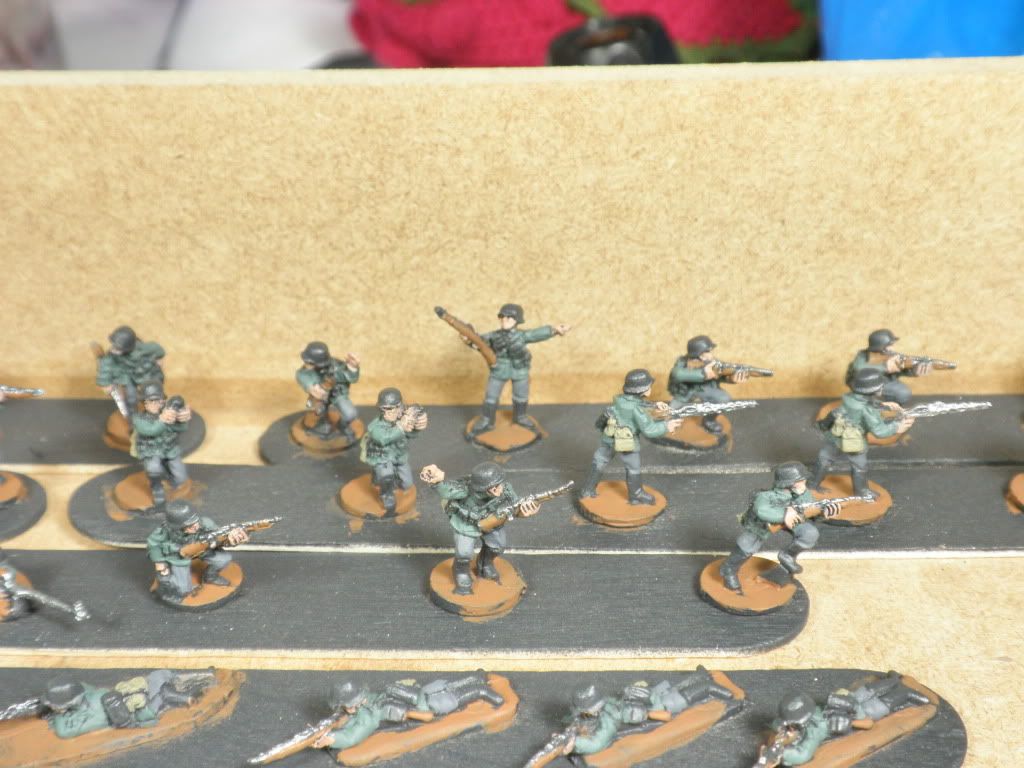


Paints used, in the order I painted them:
Tunics - Vallejo German Uniform 920
Pants - Citadel Foundation Adeptus Battlegrey
Metal - Vallejo Game Color Gunmetal Metal 054 (yes, it is a redundant name)
Wood and bases - Citadel Foundation Calthan Brown
Skin - Citadel Foundation Tallarn Flesh
Canteen and bread bag - Vallejo FoW Khaki 988
First off the popsicle sticks made a HUGE difference. I had to kind of figure out how to use them, but once I did they were awesome. The first stick I did the tunics on I painted each model on all sides and it helped, but not a lot. Then I tried doing one entire side, then shifting my grip on the stick and doing the other side. That was the trick. I cut the time I spent painting the tunics in half.
I also quickly decided to not worry about painting over the webbing suspenders. The detail is close to the model, so it was really hard to avoid getting paint on it and it was taking a lot of time. It won't take me nearly as much time to cover the straps with a bit of black paint later. On the other hand, I didn't paint over the pouches and the like. As I love to explain to my students, it is all about opportunity costs. I've got a limited amount of time to paint, so I can use that time painting base coats or detail. In the end, any time I spend on one I can't spend on the other. So if it takes me 30 seconds less to paint a model if I just paint over the straps, but it only takes me 10 seconds to re-paint the straps, then I'm gaining 20 seconds a model. With 150 models, that one change is saving me almost an hour. I can spend that hour painting Waffenfarbe (branch color on their shoulder straps) or rank insignia.
A little about my brushes. I have three "go-to" brushes for almost everything I do with 15mm infantry. I have a Citadel Standard Brush and two Vallejo kolinsky sable brushes, a 1 and a 2/0. The kolinsky brushes are amazing - they are incredibly precise, and seem to almost be able to read my mind, getting paint where it needs to be without even trying. On the other hand, this precision can be a bit of a pain when I want coverage. That's when I pull out the Citadel brush. That's made of cheaper squirrel hair, which doesn't have as much spring in it, so it flows around other detail more easily, and tends to get into deeper places that are hard to hit with the more precise kolinsky brushes. So most of this work was done with the Citadel brush, though the skin was with the kolinsky brushes, and I'll pretty much be using them for everything on the infantry but drybrushing from here on out.
Oh, and I won't use them for the next step - I'm going to try "the dip" for these guys. For those who don't know, that's using a polyurethane wood stain on them, which gets down into the crevices of the detail in a very even way, creating great faded shading. I'll try it on one stand of these guys, and report on the results. In the mean time, I've got all the infantry built and primed, so I think I'll start building my tanks!


No comments:
Post a Comment